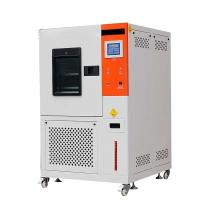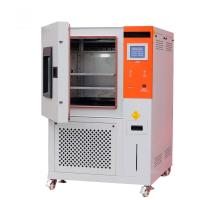In the highly competitive and rapidly evolving world of consumer
electronics, mobile phones, computers, and tablets have become an
integral part of our daily lives. Ensuring the reliability and
performance of these devices under various environmental conditions
is of utmost importance. The Constant Climatic Test Chamber is a
specialized and essential tool designed specifically for testing
these popular electronic devices. This chamber enables
manufacturers, quality control teams, and researchers to subject
mobile phones, computers, and tablets to a precisely controlled and
stable set of climatic conditions, mimicking the diverse
environments these devices may encounter in real - world use.
The Constant Climatic Test Chamber is tailored to meet the unique
testing requirements of mobile phones, computers, and tablets.
These devices are used in a wide range of settings, from the
freezing cold of winter outdoors to the sweltering heat of a
tropical climate, and from the dry air of an air - conditioned
office to the high humidity of a coastal area. The primary purpose
of this chamber is to create a controlled environment where these
electronic devices can be tested for their ability to withstand
different combinations of temperature, humidity, and other climatic
factors.
By simulating real - world climatic conditions, manufacturers can
identify potential weaknesses in the design, materials, and
manufacturing processes of mobile phones, computers, and tablets.
This information can then be used to improve product quality,
enhance durability, and ensure that these devices perform optimally
under various environmental conditions, meeting the high
expectations of consumers.
- Wide Temperature Range
- The chamber is capable of maintaining a temperature range that is
highly relevant to the testing needs of mobile phones, computers,
and tablets. It can reach extremely low temperatures, typically as
low as - 70°C, which is useful for testing how these devices
perform in cold climates, such as during winter outdoor use or in
cold storage facilities. On the other hand, it can also achieve
high temperatures of up to + 150°C, simulating the heat that these
devices may experience in hot environments, like in a car parked
under the sun or in a poorly ventilated room with high ambient
temperatures.
- The temperature control is highly precise, with an accuracy of
typically ±0.5°C. This level of precision ensures that the devices
are exposed to the exact temperature conditions required for the
test, enabling accurate and reliable assessment of their
performance.
- Accurate Humidity Regulation
- Humidity levels within the chamber can be precisely regulated from
as low as 10% relative humidity to as high as 95% relative
humidity. This wide range is crucial as mobile phones, computers,
and tablets are used in various humidity conditions. Low humidity
can cause static electricity problems, while high humidity can lead
to corrosion, short - circuits, and other electrical issues.
- The humidity control accuracy is usually within ±3% relative
humidity. This ensures that the test environment closely replicates
the real - world humidity conditions that these devices may
encounter, providing reliable test results.
- Uniform Climatic Distribution
- The interior of the constant climatic test chamber is designed to
provide a uniform distribution of temperature and humidity
throughout the test volume. This is achieved through a combination
of advanced air circulation systems and precise sensor placement.
The temperature variation within the chamber is typically within
±1°C, and the humidity variation is within ±5% relative humidity.
- For mobile phones, computers, and tablets, which are often small in
size but contain many sensitive components, a uniform environment
is crucial. It ensures that all parts of the device are exposed to
the same climatic conditions, eliminating any bias in the test
results and providing a more accurate representation of the
device's performance under real - world conditions.
- Long - Term Stability











